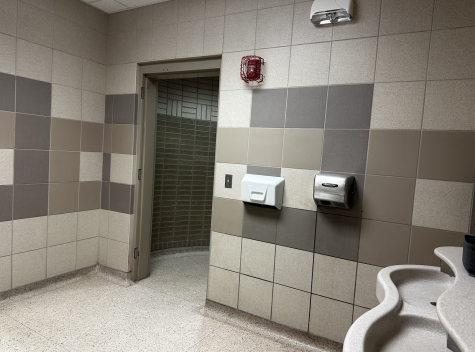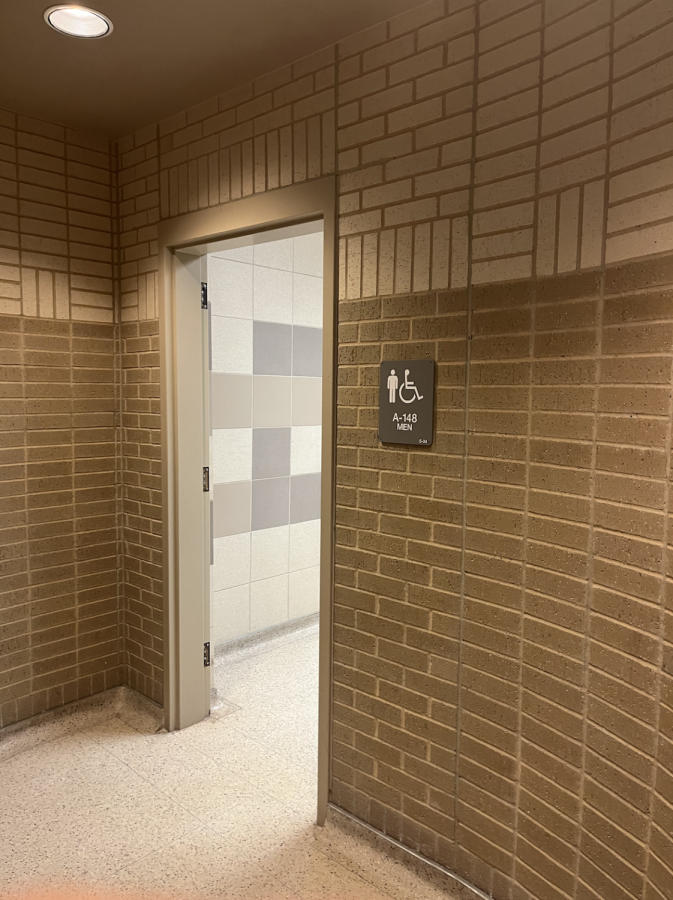Substances Abused
A cloud of smoke has followed the teen image for decades. At Lake Ridge, that cloud of smoke has followed students right into the bathrooms, which were locked up for weeks. However, after students returned from spring break a few weeks ago, they found that the bathroom doors had been taken off their hinges, leaving a gap in their place.
The stereotypes of typical American high schools don’t stem from just Hollywood’s depiction of the system; statistics prove that by 12th grade, 46.6% of teenagers try drugs. This is true for schools all across the nation. Students and staff at Lake Ridge have noticed this trend in drug activity in the past few months.
As these substance abuse issues, in addition to fights, surface and escalate, the school sees the aftereffects. Students faced the consequences of their peers using the bathrooms inappropriately when they realized approximately 12 bathrooms across the three floors had been locked, leaving only one male and one female bathroom per floor, not including the library and gym. This started off as a smaller number, but as more and more students got caught vaping and doing drugs in secluded stalls and brightly lit corners of the bathrooms, more have been closed off.
Often, it was minutes before students could access a bathroom that was unlocked. Junior, Giordana Calderin, thinks that while this is an honest effort on the administration’s part to control the use of drugs at school, it also causes problems for those who have nothing to do with those issues. While it stops one concern, it raises another of students wandering around trying to find a bathroom to use.
“I do think they’re trying but there’s an overwhelming amount of people that use any type of drug and so it’s hard to keep up for them,” said Calderin. “People on the third floor have to go to the second and then it becomes really clustered with people. So it’s causing a lot of problems and I don’t think it’s a solution.”
 The decision to remove bathroom doors was discussed at a monthly community breakfast with principal Ashley Alloway. Whether bathroom doors are available to hide behind or not, counselor Ashley Wann believes that students who are willing to use drugs at school will most likely find a way to do it.
The decision to remove bathroom doors was discussed at a monthly community breakfast with principal Ashley Alloway. Whether bathroom doors are available to hide behind or not, counselor Ashley Wann believes that students who are willing to use drugs at school will most likely find a way to do it.
“I think that if they are that intent on doing it, that they’re going to find a way or be willing to take a risk of going into a bathroom that’s close to an AP’s office or by the cafeteria. I don’t think closing a bathroom is going to stop a kid whose intent is to do it. Unfortunately, I don’t know that it’s necessarily helped, but maybe just moved the problem,” Wann said.
When trying to balance a good school record, a healthy home life, and a stimulating personal life, teenagers often get overwhelmed. Most are setting themselves up for success through good scholarships and college along with experiencing things like moving out and living on their own for the first time. When students attempt to deal with the difficulties and stress of some of these complexities, they may turn to drugs. Wann believes that while this is common, it is not effective long term.
“I think from a counselor’s perspective, students use drugs to mask or hide from mental health difficulties or difficulties at home, stress, all the things that come with being a teenager,” said Wann. “Any kind of drug use or abuse can be attributed to mental health difficulties or struggles that they’re not facing in a healthy way.”
Influenced by peers, social media, and even culture, many students pick up drugs as a way to be a part of the scandalous rhetoric.
“A lot of people find it fun and like a way of experimenting. It’s also something they have control over because it’s highly accessible, especially now. It’s just like a recreation,” said junior Bianca Medina Ardizzi.
In recent years, cannabis, more commonly known as marijuana, has been legalized in multiple states across America. Starting in California in 1996 to South Dakota in 2020, the medical use of this drug has gotten more normalized. While it is still illegal in Texas for recreational use, senior Aidan Toombs believes people are more comfortable using the drug now, causing the increase of its use.
“It’s because of marijuana getting legalized in a couple of states. People think it’s a lot more easy to access now. It’s a lot more potent now, I feel, especially around here,” Toombs said.
Faculty, especially AP’s and nurses, have become trained in identifying when a student may be under the influence. While these signs may be unrecognizable to the common public, they are apparent for those looking.This may include a decline in mental health, abnormal sleeping and eating habits, and more differences in behavior in the person over a period of time. In a school environment, immediate attention gets drawn to things like a tendency to fall asleep in class, drowsiness, and poor coordination. Registered nurse Amy Burkart has noticed many substance abuse problems recently, and has had to deal with them accordingly.
“I’ve gotten pretty good at identifying what kids appear to be under the influence. And then I always have to call whoever the kid’s AP is and the campus police have to get involved. Typically we search their belongings. Parents have to be called,” said Burkart.
The district has a 24/7 access page on its website that students and parents can access. It provides information on substance abuse, mental health concerns, and more. Since counselors cannot directly do anything for kids who struggle with these issues, they provide resources for them and their parents to get the help they might need. One such resource is the Care Solace Program.
“We can’t put them in drug treatment. We can’t do those kinds of things. That’s a parent thing,” said counselor Lori Cook. “So we give parents resources, we encourage them to do something like that. But ultimately, it’s up to the parent to want to do that because we’re not parents of the kids here so we can’t make those decisions for them.”
Drugs have been a part of the high school image for decades. As these issues increase and decrease, one thing remains constant: their use. In the past few weeks, the school bathrooms have gone from being locked and expendable to doorless and open, and it is yet to be determined what approach will finally put a stop to the rise of substance abuse.


